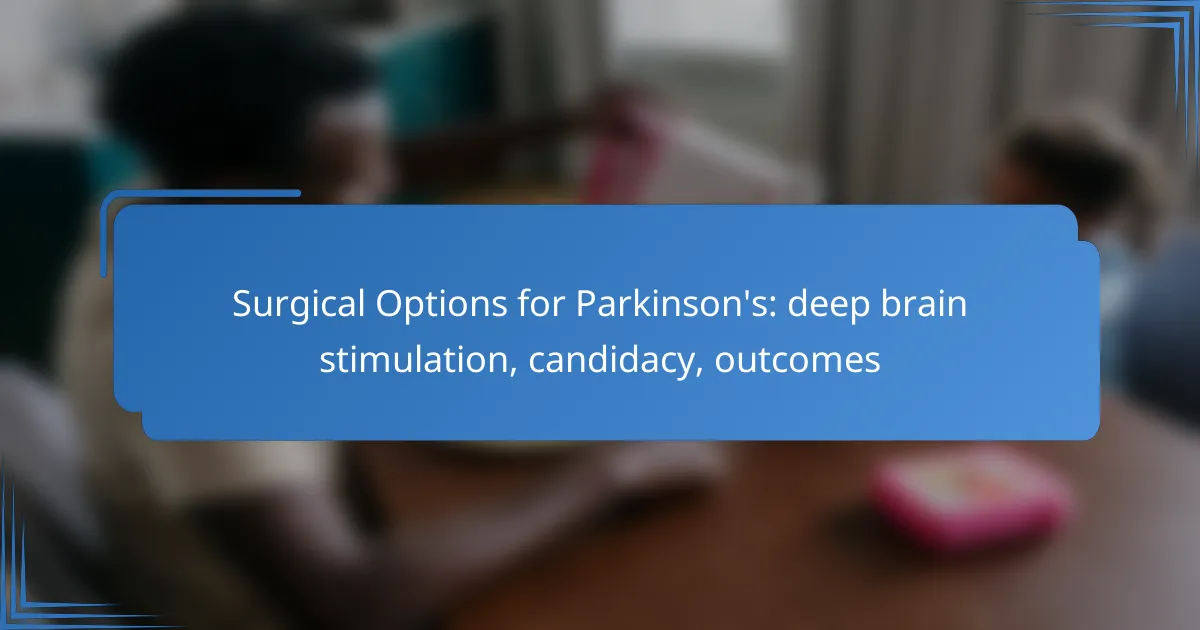Surgical options for managing Parkinson’s disease, particularly deep brain stimulation (DBS), offer hope for patients who struggle with motor symptoms despite medication. Candidacy for DBS involves a thorough evaluation of factors such as age, health status, and symptom severity. This procedure has been shown to significantly improve symptoms and enhance the overall quality of life for many individuals living with Parkinson’s.
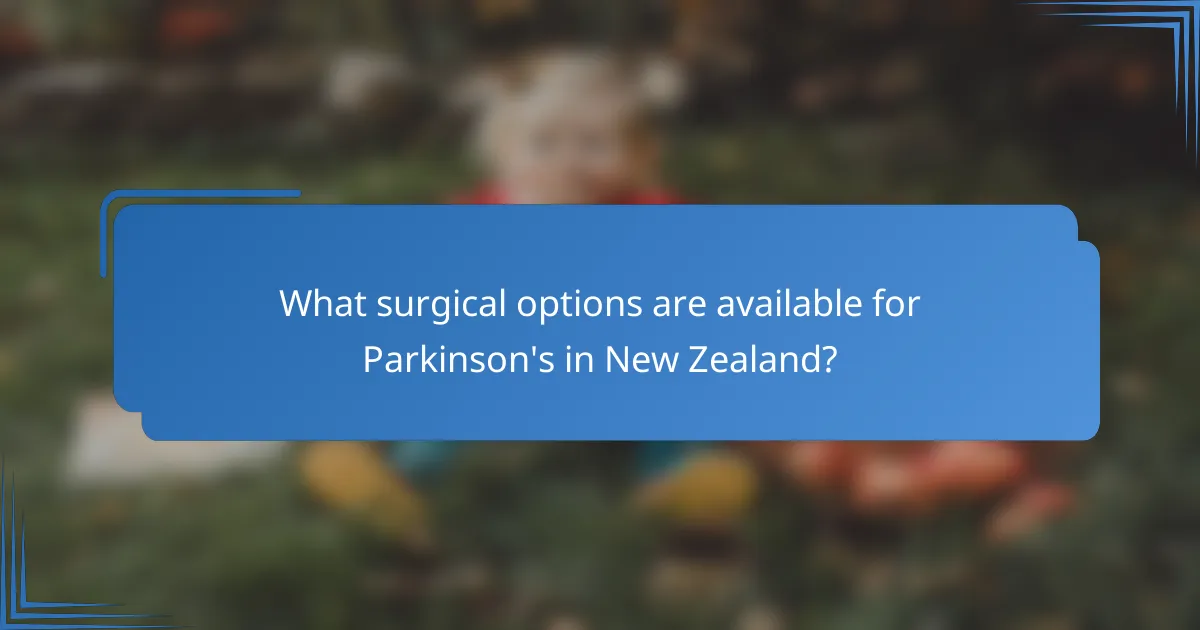
What surgical options are available for Parkinson’s in New Zealand?
In New Zealand, the primary surgical options for Parkinson’s disease include deep brain stimulation (DBS), lesioning procedures, and focused ultrasound. These interventions aim to alleviate symptoms and improve quality of life for patients who do not respond adequately to medication.
Deep Brain Stimulation (DBS)
Deep brain stimulation involves implanting electrodes in specific brain regions to modulate abnormal neural activity. This procedure is typically considered for patients with advanced Parkinson’s who experience motor fluctuations or dyskinesias despite optimal medication management.
Patients must undergo a comprehensive evaluation to determine candidacy, including assessments of their overall health and the severity of their symptoms. The procedure can lead to significant improvements in motor function, with many patients experiencing a reduction in tremors and better control over movement.
Lesioning Procedures
Lesioning procedures, such as pallidotomy and thalamotomy, involve creating targeted lesions in the brain to disrupt abnormal circuits associated with Parkinson’s symptoms. These procedures can be effective for patients who have not found relief through medication or DBS.
While lesioning can provide immediate symptom relief, it carries risks such as speech and movement difficulties. Patients should discuss potential outcomes and complications with their healthcare team to make informed decisions about their treatment options.
Focused Ultrasound
Focused ultrasound is a non-invasive technique that uses high-frequency sound waves to create lesions in specific brain areas, similar to traditional lesioning procedures. This method is gaining traction in New Zealand as a treatment option for tremors associated with Parkinson’s disease.
Patients benefit from the absence of incisions and reduced recovery time, but the procedure may not be suitable for everyone. A thorough evaluation is necessary to determine if focused ultrasound is an appropriate choice based on individual symptoms and health status.
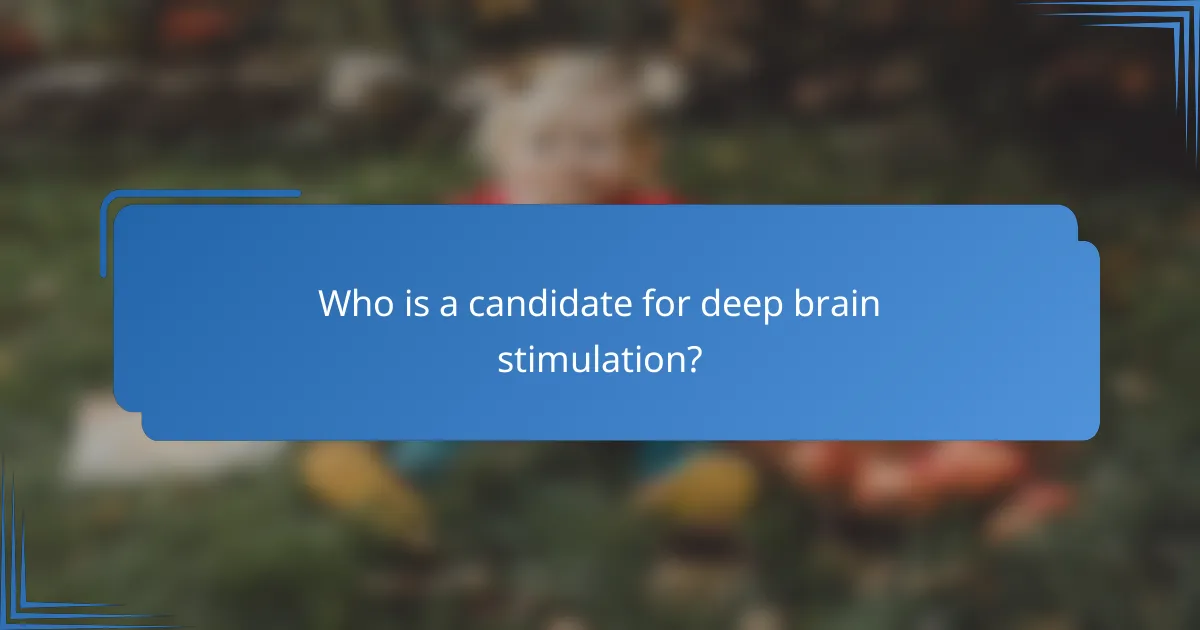
Who is a candidate for deep brain stimulation?
Candidates for deep brain stimulation (DBS) are typically individuals with Parkinson’s disease who experience significant motor symptoms that are not adequately controlled by medication. The selection process involves evaluating various factors, including age, overall health, symptom severity, and response to current treatments.
Age and Health Status
Age can influence the candidacy for DBS, as older patients may have a higher risk of complications. Generally, candidates are often between 30 and 80 years old, but overall health status is more critical than age alone. Those with significant comorbidities, such as severe cardiovascular issues or uncontrolled diabetes, may not be suitable for the procedure.
Surgeons typically assess the patient’s physical condition, cognitive function, and ability to undergo anesthesia. A thorough evaluation ensures that the potential benefits of DBS outweigh the risks involved.
Severity of Symptoms
Candidates for DBS usually exhibit moderate to severe motor symptoms, including tremors, rigidity, and bradykinesia, that significantly impact daily life. Symptoms should be persistent and not solely episodic, as DBS is most effective for individuals who experience consistent challenges with movement.
Healthcare providers often use standardized scales, such as the Unified Parkinson’s Disease Rating Scale (UPDRS), to assess symptom severity. This evaluation helps determine if DBS could provide meaningful improvement in quality of life.
Response to Medication
A strong response to Parkinson’s medications, particularly levodopa, is a key indicator for DBS candidacy. Candidates typically experience a reduction in symptoms when taking these medications but may also suffer from motor fluctuations or dyskinesias as the disease progresses.
Patients who have developed a diminished response to medication or who experience significant side effects may benefit from DBS. The procedure can help stabilize symptoms and reduce reliance on medication, leading to a more consistent quality of life.
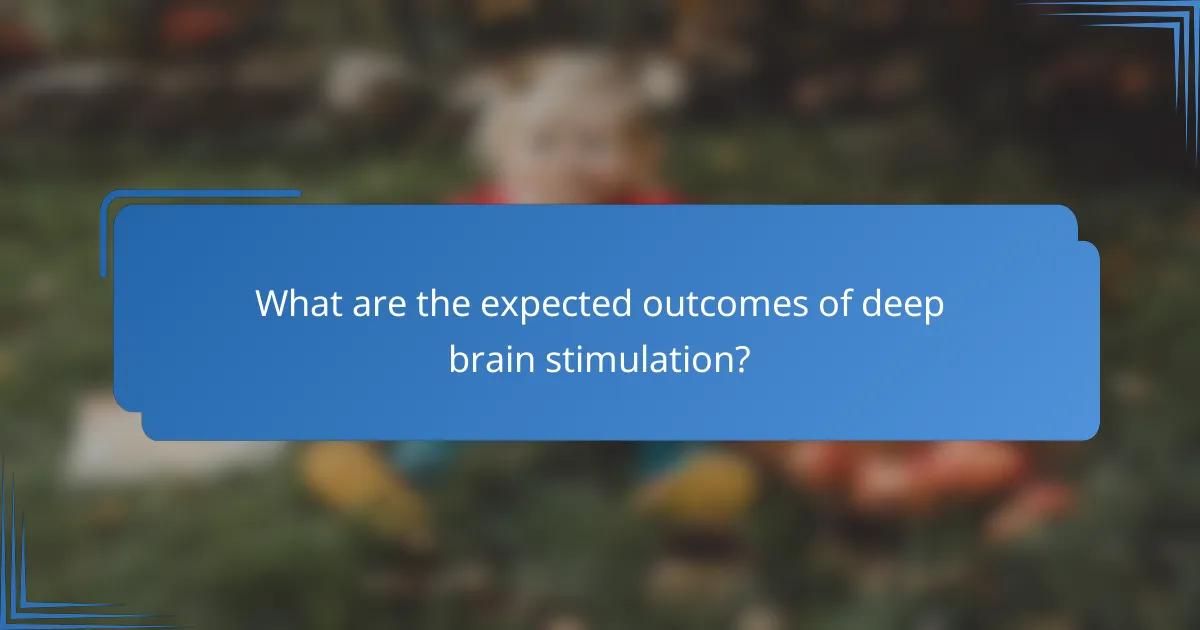
What are the expected outcomes of deep brain stimulation?
Deep brain stimulation (DBS) can significantly improve symptoms of Parkinson’s disease, particularly motor symptoms, while also reducing the need for medication. Patients often experience enhanced quality of life following the procedure.
Improvement in Motor Symptoms
DBS primarily targets areas of the brain that control movement, leading to substantial improvements in motor symptoms such as tremors, rigidity, and bradykinesia. Many patients report a reduction in these symptoms by as much as 50% to 70% after the procedure.
However, the degree of improvement can vary based on individual factors, including the duration of Parkinson’s disease and the specific areas targeted during stimulation. Regular follow-ups are essential to adjust settings for optimal results.
Reduction in Medication
After undergoing DBS, many patients find they can significantly reduce their Parkinson’s medication, which can help minimize side effects associated with long-term drug use. It is common for patients to decrease their medication by 30% to 50% within the first year post-surgery.
While some patients may still require medication for symptom management, the overall reduction can lead to a more stable and manageable treatment regimen. Close monitoring by healthcare providers is crucial to ensure safety during this transition.
Quality of Life Enhancements
Patients who receive DBS often report improvements in their overall quality of life, including better emotional well-being and increased ability to perform daily activities. Enhanced motor control allows for greater independence and participation in social and recreational activities.
Additionally, the reduction in medication can lead to fewer side effects, contributing to a more positive outlook. Regular assessments and support from healthcare teams can further enhance these quality of life improvements over time.
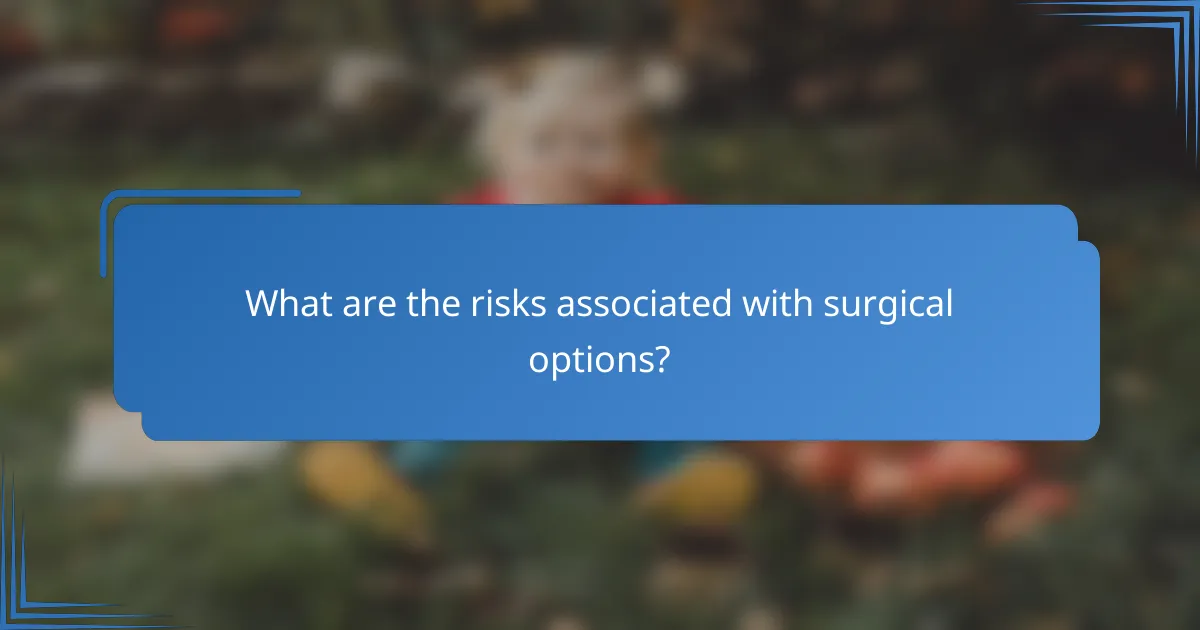
What are the risks associated with surgical options?
Surgical options for Parkinson’s disease, such as deep brain stimulation, carry several risks that patients and their families should consider. Understanding these risks can help in making informed decisions about treatment options.
Infection Risks
Infection is a significant concern with any surgical procedure, including deep brain stimulation. The risk of infection can range from low to moderate, depending on factors such as the patient’s overall health and the surgical environment.
To minimize infection risks, surgeons typically use sterile techniques and may prescribe antibiotics before and after the procedure. Patients should be vigilant for signs of infection, such as fever or unusual swelling at the surgical site, and report these to their healthcare provider promptly.
Device Malfunction
Device malfunction is another risk associated with deep brain stimulation. While the technology is generally reliable, issues can arise, such as battery failure or lead displacement, which may require additional surgery to address.
Regular follow-ups with a neurologist are essential to monitor the device’s function and make necessary adjustments. Patients should be aware of the device’s expected lifespan and plan for replacement procedures as needed.
Neurological Complications
Neurological complications can occur as a result of surgery or device implantation. These may include changes in mood, cognitive function, or motor skills, which can vary in severity.
Patients should discuss potential neurological risks with their healthcare team before surgery. Monitoring and rehabilitation strategies can help manage any complications that arise, ensuring that patients receive appropriate support throughout their treatment journey.
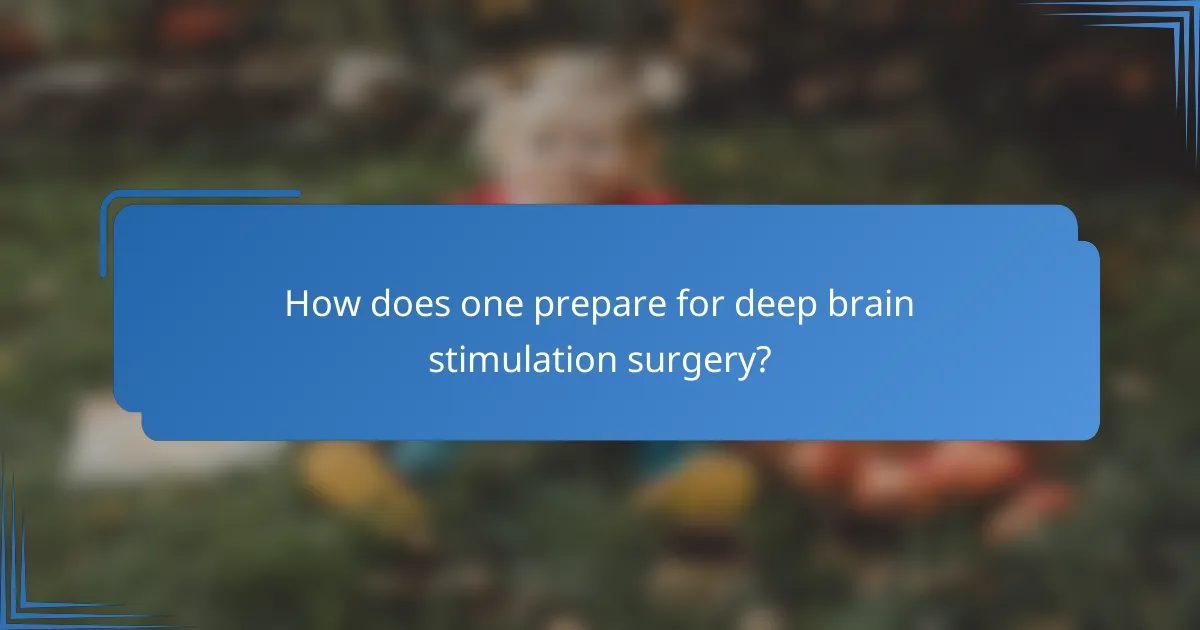
How does one prepare for deep brain stimulation surgery?
Preparing for deep brain stimulation (DBS) surgery involves several key steps that ensure the patient is ready for the procedure. This preparation includes thorough assessments, adjustments to medications, and comprehensive education about the surgery and its implications.
Preoperative Assessments
Preoperative assessments are crucial for determining a patient’s suitability for DBS surgery. These evaluations typically involve neurological examinations, imaging studies like MRI or CT scans, and psychological assessments to ensure the patient can cope with the surgery and its aftermath.
Healthcare providers may also assess the patient’s overall health, including cardiovascular and respiratory function, to minimize risks during the surgery. This thorough evaluation helps tailor the surgical approach to the individual’s needs.
Medication Adjustments
Medication adjustments are often necessary in the lead-up to DBS surgery. Patients may need to modify their current Parkinson’s disease medications to optimize their condition before the procedure. This can involve reducing or temporarily stopping certain medications that could interfere with the surgery.
For instance, medications like anticoagulants may need to be paused to reduce bleeding risks. It is essential for patients to closely follow their healthcare provider’s instructions regarding these adjustments to ensure a safe surgical experience.
Patient Education
Patient education is a vital component of preparing for DBS surgery. Patients should receive detailed information about the procedure, including what to expect during and after the surgery. Understanding the potential benefits and risks helps patients make informed decisions.
Additionally, patients should be educated about the recovery process, including post-operative care and follow-up appointments. This knowledge empowers patients to engage actively in their recovery and manage their expectations effectively.
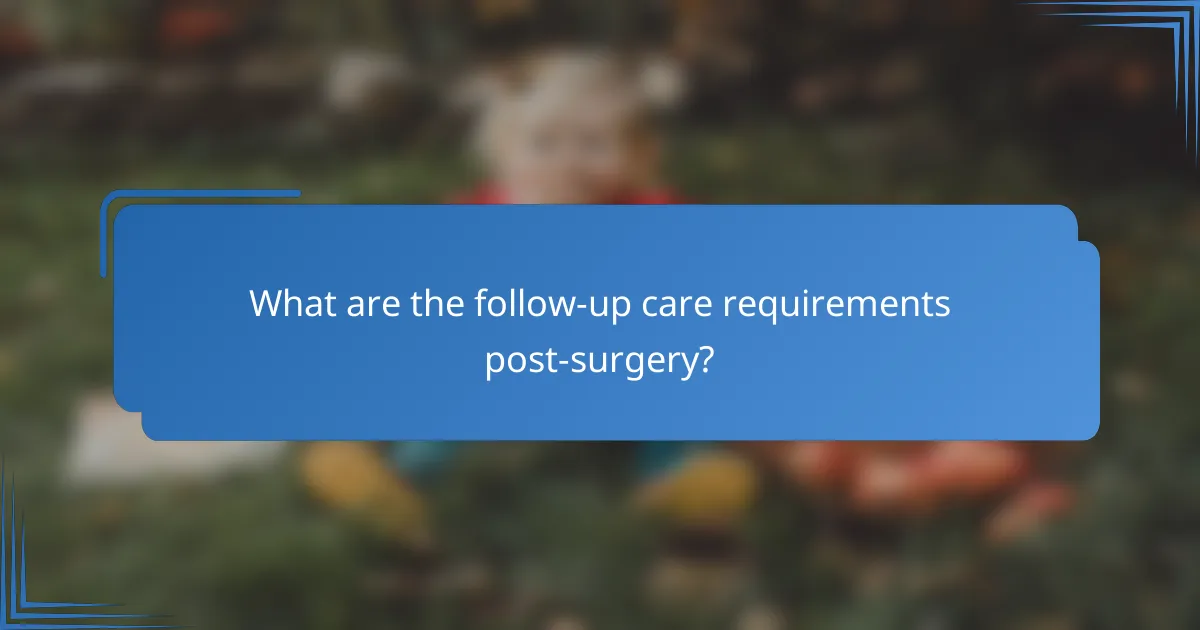
What are the follow-up care requirements post-surgery?
Follow-up care after surgery for Parkinson’s, particularly deep brain stimulation (DBS), is crucial for optimizing outcomes and managing any complications. Patients typically require regular assessments and adjustments to ensure the stimulation settings are effective and to monitor overall health.
Regular Monitoring
Regular monitoring involves scheduled visits to the healthcare provider to assess the patient’s response to the DBS. These appointments usually occur every few months initially, then may extend to biannual or annual visits as stability is achieved. During these visits, healthcare professionals evaluate motor symptoms, side effects, and overall quality of life.
Patients should be proactive in reporting any changes in symptoms or side effects between appointments. Keeping a diary of symptoms can help track fluctuations and provide valuable information during consultations.
Adjustment of Stimulation Settings
Adjustment of stimulation settings is a key component of follow-up care. After surgery, the neurostimulator’s settings may need to be fine-tuned to achieve the best therapeutic effect. This process can involve altering the frequency, amplitude, and pulse width of the electrical stimulation.
Healthcare providers often use a handheld device to adjust these settings during follow-up visits. It may take several sessions to find the optimal configuration, and patients should expect ongoing adjustments as their condition evolves. Regular communication about any changes in symptoms is essential to guide these adjustments effectively.
